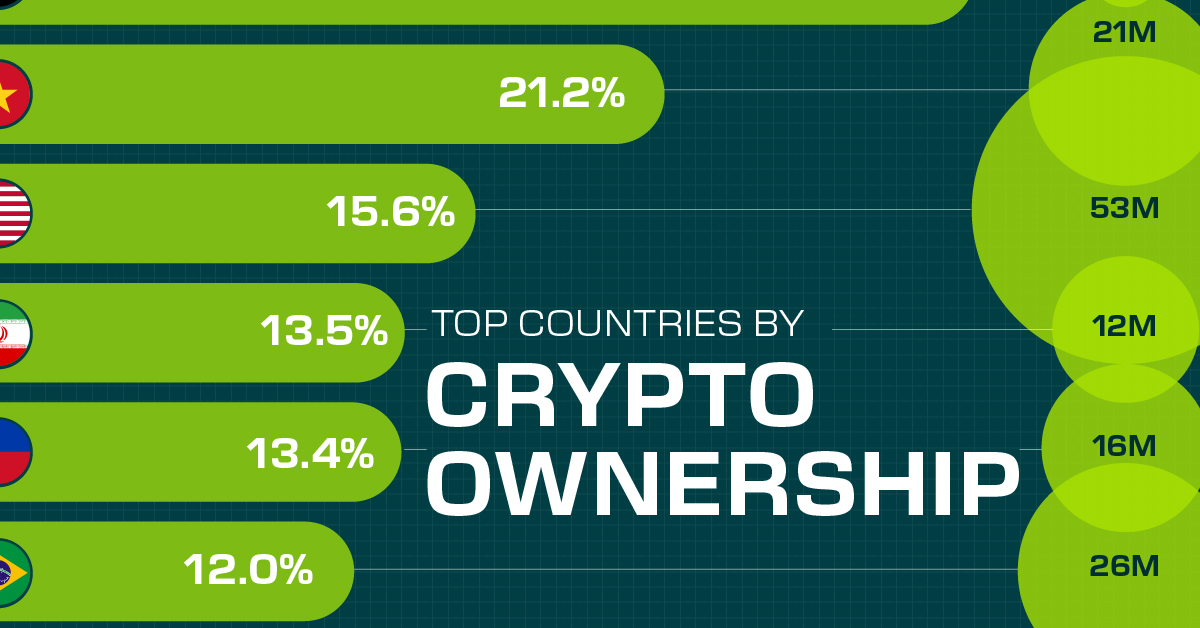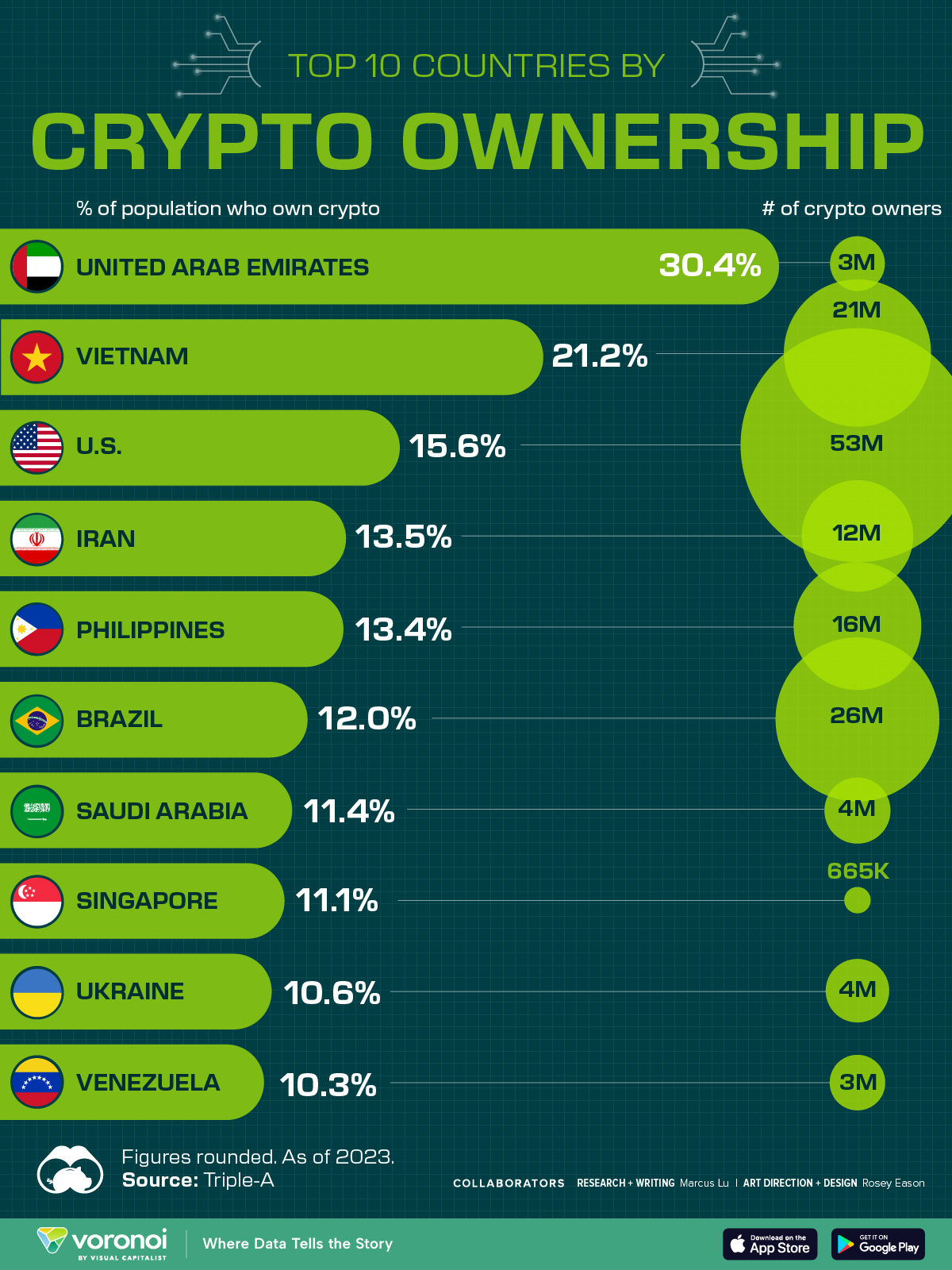Technology
Tap Into the Mobile Payments Revolution

Tap Into the Mobile Payments Revolution
The trends and contenders that are shaping mobile payments.
Thanks to Purefunds Mobile Payments ETF (IPAY) for helping us put this together.
Yesterday, user-friendly payment processor Stripe announced a strategic investment and partnership from Visa that values the company at $5 billion. Other investors that participated are not unknowns either: Kleiner Perkins Caufield Byers, American Express, and Sequoia. It was only in December that Stripe was valued at $3.5 billion and in their previous financing, they were valued at just half of that. Stripe will use Visa’s international connections to help it expand beyond the 20 countries it currently services.
This type of story is not unusual in the payment space. Companies are scrambling to scale or adopt new technologies that integrate mobile and electronic features to make it easier, cheaper, and faster for customers to pay. The reason for this is that the payments ecosystem has always been more cumbersome and more expensive than it should be. In the United States alone, retail merchants that accept card-based payments were charged about $67 billion in fees. Add the rest of the world to that pie, and it makes it clear that the payments space is as ripe for disruption as any other.
Mobile and electronic payments allow customers to pay for goods with a tap of a phone or the press of a button. Two of every three Americans have a smartphone, and mobile payments can typically happen faster with less fees. The earliest adopters of mobile payments have a younger and affluent profile: they average just over 30 years old, have a higher annual income, and spend over 2x more on retail than unwilling non-users of mobile payments.
Big Data and the Developing World
One of the most attractive benefits of mobile payments is the integration of big data and predictive analytics. Retailers will have the capability to link purchases directly with location (GPS), consumer behaviour, purchase history, demographics, and social influence. Analyzing this information will allow companies to reach out to consumers with tailored offerings, loyalty programs, and rewards. Customers will be able to take action right from their mobile device.
The opportunities in payments are not just limited to in the United States or even the developed world. Perhaps one of the most interesting opportunities for the mobile payments space is in Africa, where bank penetration is extremely low at only about 25% and mobile phone penetration is higher at 60%. Kenya is a good example of a market where digitization has reached a large portion of the population, giving mobile payments an 86% household penetration.
Mckinsey did an analysis looking at the size of revenue pools for mobile payments if each market in Africa had the same penetration as Kenya, and it sees the pools more than doubling in places like Ethiopia and Nigeria. With the population in sub-Saharan Africa expected to balloon from 926 million to 2.2 billion by 2050, their appears to be even greater opportunity.
Tapping In
The earliest potential in the mobile and electronic payments market appears to be in areas such as micropayments, incidental payments, recurring bills, peer-to-peer money transfers, and cryptocurrency. However, in the long term, the concept can be applied to many different facets of commerce.
Mobile payments may continue to disrupt the big payments market because of several factors including a young and growing userbase, ease of use, faster transactions, cheaper costs, and increased adoption. As Smittipon Srethapramote, who covers the North American payments industry for Morgan Stanley, concludes in a summary on the subject: “Mobile Payments can expand the global revenue pie from $175 billion to $250 billion, including $45 billion in developed markets and $30 billion in emerging markets.”
Technology
Countries With the Highest Rates of Crypto Ownership
While the U.S. is a major market for cryptocurrencies, two countries surpass it in terms of their rates of crypto ownership.

Countries With the Highest Rates of Crypto Ownership
This was originally posted on our Voronoi app. Download the app for free on iOS or Android and discover incredible data-driven charts from a variety of trusted sources.
This graphic ranks the top 10 countries by their rate of cryptocurrency ownership, which is the percentage of the population that owns crypto. These figures come from crypto payment gateway, Triple-A, and are as of 2023.
Data and Highlights
The table below lists the rates of crypto ownership in the top 10 countries, as well as the number of people this amounts to.
| Country | % of Population Who Own Crypto | # of Crypto Owners |
|---|---|---|
| 🇦🇪 United Arab Emirates | 30.4 | 3M |
| 🇻🇳 Vietnam | 21.2 | 21M |
| 🇺🇸 U.S. | 15.6 | 53M |
| 🇮🇷 Iran | 13.5 | 12M |
| 🇵🇭 Philippines | 13.4 | 16M |
| 🇧🇷 Brazil | 12 | 26M |
| 🇸🇦 Saudi Arabia | 11.4 | 4M |
| 🇸🇬 Singapore | 11.1 | 665K |
| 🇺🇦 Ukraine | 10.6 | 4M |
| 🇻🇪 Venezuela | 10.3 | 3M |
Note that if we were to rank countries based on their actual number of crypto owners, India would rank first at 93 million people, China would rank second at 59 million people, and the U.S. would rank third at 52 million people.
The UAE Takes the Top Spot
The United Arab Emirates (UAE) boasts the highest rates of crypto ownership globally. The country’s government is considered to be very crypto friendly, as described in Henley & Partners’ Crypto Wealth Report 2023:
In the UAE, the Financial Services Regulatory Authority (FSRA-ADGM) was the first to provide rules and regulations regarding cryptocurrency purchasing and selling. The Emirates are generally very open to new technologies and have proposed zero taxes for crypto owners and businesses.
Vietnam leads Southeast Asia
According to the Crypto Council for Innovation, cryptocurrency holdings in Vietnam are also untaxed, making them an attractive asset.
Another reason for Vietnam’s high rates of ownership could be its large unbanked population (people without access to financial services). Cryptocurrencies may provide an alternative means of accessing these services without relying on traditional banks.
Learn More About Crypto From Visual Capitalist
If you enjoyed this post, be sure to check out The World’s Largest Corporate Holders of Bitcoin, which ranks the top 12 publicly traded companies by their Bitcoin holdings.
-

 Markets5 days ago
Markets5 days agoMapped: The Most Valuable Company in Each Southeast Asian Country
-

 Markets2 weeks ago
Markets2 weeks agoThe Top Private Equity Firms by Country
-

 Jobs2 weeks ago
Jobs2 weeks agoThe Best U.S. Companies to Work for According to LinkedIn
-

 Economy2 weeks ago
Economy2 weeks agoRanked: The Top 20 Countries in Debt to China
-

 Politics1 week ago
Politics1 week agoCharted: Trust in Government Institutions by G7 Countries
-

 Energy1 week ago
Energy1 week agoMapped: The Age of Energy Projects in Interconnection Queues, by State
-

 Mining1 week ago
Mining1 week agoVisualizing Global Gold Production in 2023
-

 Markets1 week ago
Markets1 week agoVisualized: Interest Rate Forecasts for Advanced Economies















